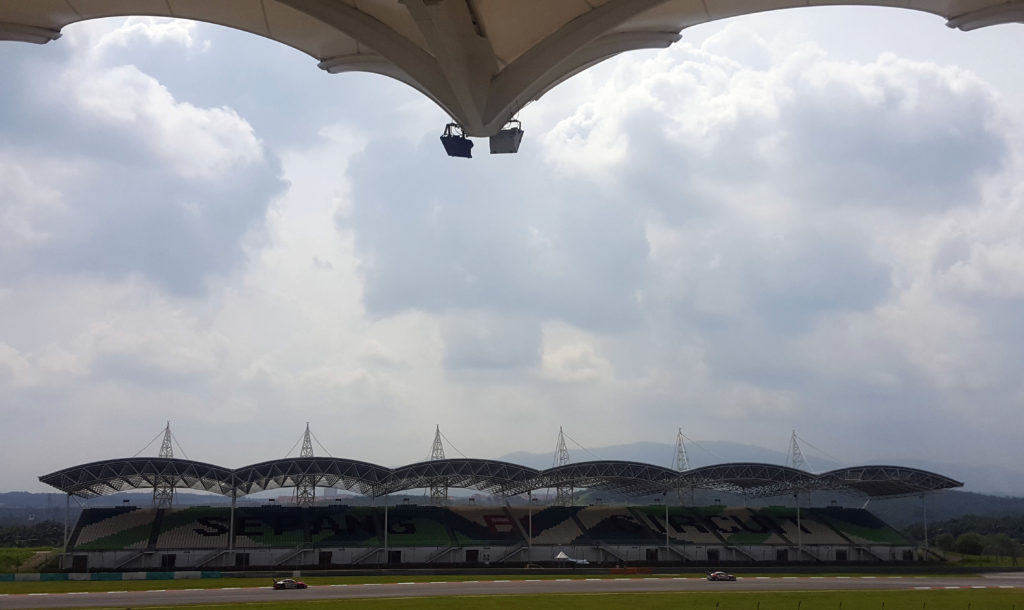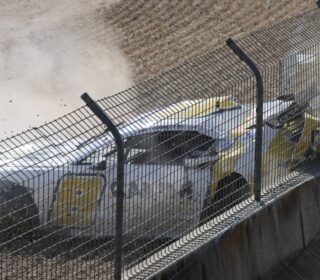A STORY OF SEPANG

THERE IS something interesting about the Sepang International Circuit.
There’s an interesting feeling at the place given it is still a relatviely modern circuit, yet has built quite a history through Formula 1, MotoGP, 12 Hour races and more.
The first impressions are the same as visiting any other current circuit designed and built to the high standards Formula 1 demands: immense scale, enormous covered grandstands and a level of infrastructure that smaller national circuits can, for the most part, only ever dream of.
But it feels like there is more to Sepang than that.

There’s the elevation change, for starters – far more pronounced in real life than the television or photography can ever provide.
The dramatic drop between turns one and two accounts for five or six meters before the road rises again into the uphill braking zone at turn four.
Then there’s the layout, arguably one of Herman Tilke’s finest – a compelling mixture of off-camber corners where power-down is difficult to achieve, to a combination of high speed sweepers that beckon drivers to take a larger risk than the apparently large yet deceptively minimal runoff in places offers.
The quick right hander at turn seven is followed even quicker by a faster one at eight, with runoff that beckons to push the boundaries of track limits that are not allowed to be breached, making it more of a drivers corner than the circuit map would otherwise indicate.
Turn 15 adds to the appeal; otherwise an ordinary Haprin that follows in the modern mould of slow corner into long straight into slow corner, it now has several of off-camber built into it.
It makes an otherwise mundane 60kph turn into a characterful challenge that beckons drivers to do the old ‘over under’ move when battling rivals, all the while battling to put the power down as they aim for the best run down the long front straight.
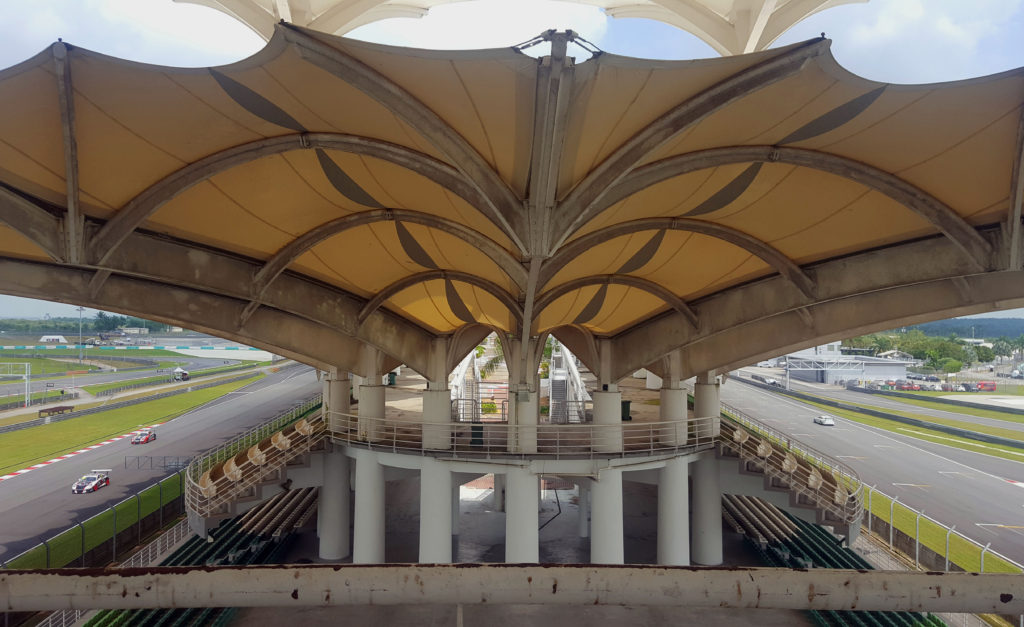
And yet there’s something more to this place as it carries 20 years of history into the final year of their Formula 1 deal, for there are elements of decay at Sepang.
The pits and paddock, of course, are excellent; though they feel like they’re not brand-new, the scale of the facility and resource available is obviously impressive.
But venture further into the venue to explore and elements of humanity emerge amongst a near-deserted facility.
There is something unquestionably eerie about an empty circuit, especially one so large that you can get so far removed from the action as to not see the cars but still hear them clearly.
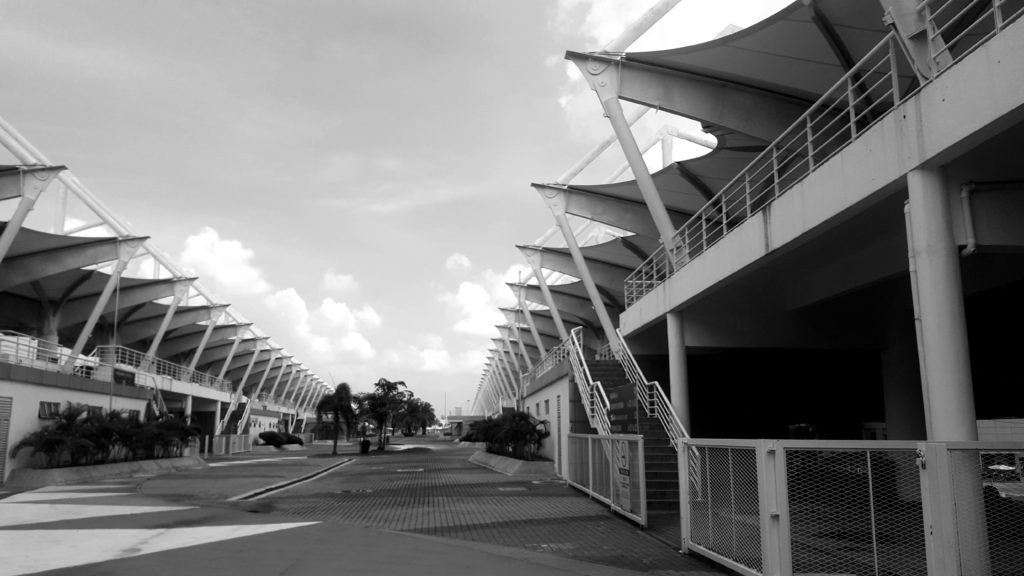
A walk along the vast, V-shaped concourse that divides the two massive grandstands that shroud the long back straight, final-turn hairpin and pit straight, shows areas of neglect.
The grasses are unkempt and the garden beds that line the promenade are tatty: some thrive with life but others are barren.
Propped-open doors to passageways that disappear into the darkness beneath the grandstand bang gently in the wind, while the paint on the back of the grandstands is tinged with the colour of rusty runoff that comes from the metal supports in the grandstands during the frequent rains there.

A large Malaysian flag flies above the three-tiered pavilion on the inside of the final corner, yet it flies tattered in the breeze that takes the edge away from the significant humidity that makes the air feel more viscous than water.
The biggest surprise is a prevailing feeling that the place is more than just another cookie-cutter modern circuit.
It’s almost as if the wear and tear over 20 years is an indication of the place having been through a lot during its life. And perhaps it has.
I am sure that for major events the complex would be cleaned and tidied up; our visit came during a Malaysian equivalent to a state series round back home; besides a few keen locals, the only people in the stands were interested tourists; families and friends of racers over from Australia and the occasional spikey-hair driver coach, headset on.

For a majority of events the vacant seats will watch nothing more than the bird droppings that covers many of them. The upkeep of such an enormous place must be an enormous undertaking and it’s understandable why some elements might suffer – especially given the challenging conditions the place has to endure.
In this instance, it’s not a negative because I think it actually adds to the story the place tells you when you’re there.
I’ve been thinking lately of places that are more than just the some of their parts – places that, for lack of a better term, have a soul.
Knowing whether an object or a being has a feeling of more than the sum of its parts is obviously a very personal and objective thing.
For me, Bathurst has a soul. The Adelaide street circuit has a soul and so too does Mallala – all built around personal experiences when there and my history visiting them.
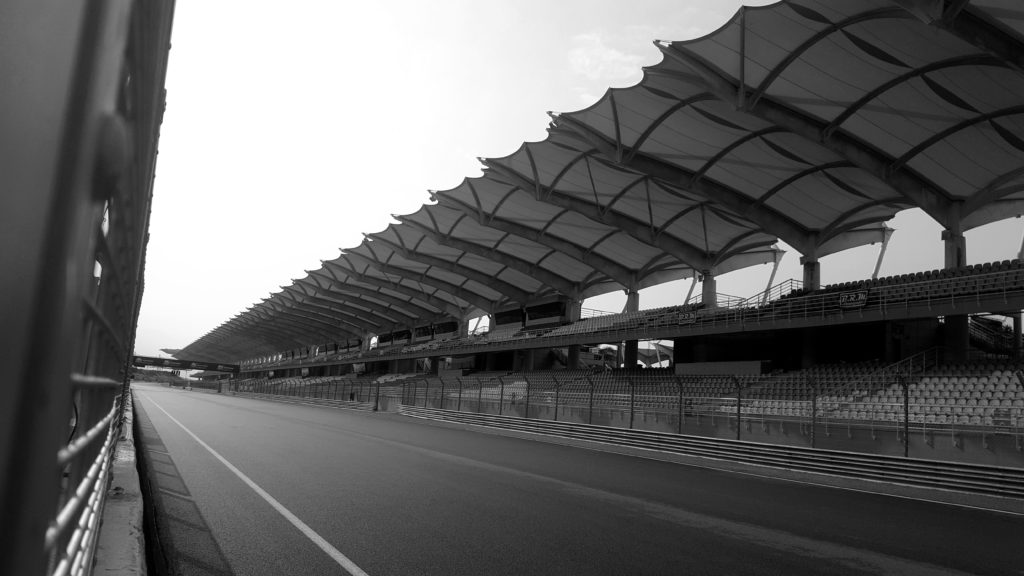
I’m not yet sure if Sepang has one – I don’t have enough experience at the circuit to judge that.
But the elements of decay and disruption on an otherwise pristine facade do give it a feeling of humanity that other modern facilities of its ilk I’ve visited have not matched.
There’s stories to be told at the circuit of events past, which is remarkable for a country without any real Motorsport culture.
The characterful layout, the local intricacies and the remarkably changeable weather (from hot and humid to hot and humid with rain) also help write the story of Sepang.
And that only adds to the eye-opening experience that is a visit to this impressive place and country – one I think I should like to make again, one day.
WORDS & PHOTOS: Richard Craill
